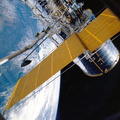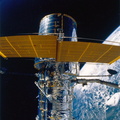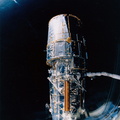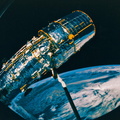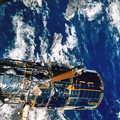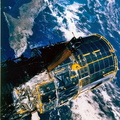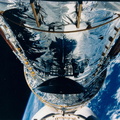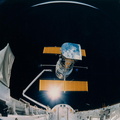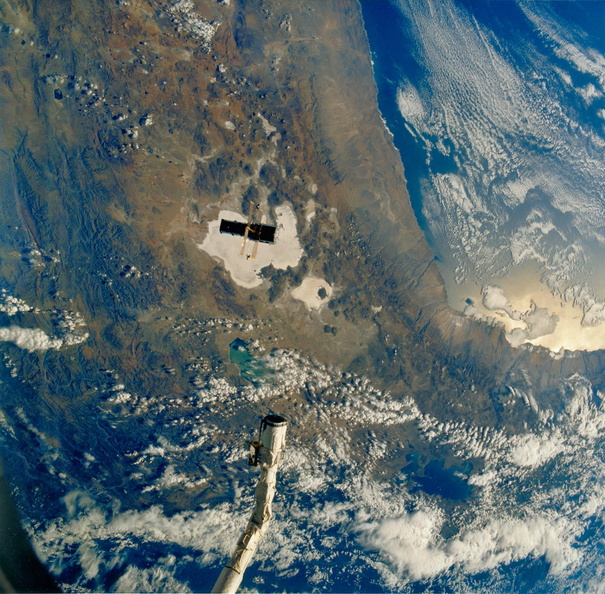
WIKIARCHIVES.SPACE
The Human Spaceflight Archive

Information
- Taken in
- Space
- Author
- NASA
- Description
- The huge Hubble Space Telescope (HST), backdropped against Bolivian, Chilean and Peruvian topography some 332 nautical miles away, and the Space Shuttle Discovery, represented in this scene by its remote manipulator system (RMS) arm, begin their relative separation in space. The chalk-colored feature directly beneath HST is called Salar de Uyuni. Lake Titicaca is in upper right, and Lake Fuope is under partial cloud cover near the RMS's end effector. This photograph, one of the first eight STS-31 onboard frames to be released by NASA, was taken with a handheld Hasselblad camera by one of the five busy crew members in Discovery's cabin.
- Created on
- Tuesday 24 April 1990
- Albums
- US SPACE PROGRAM / SPACE SHUTTLE / MISSIONS / STS-31 / Mission Photos (Original) / Hubble Deployment
- Source link
- https://mediaarchive.ksc.nasa.gov/#/Detail/95
- Visits
- 74
- Rating score
- no rate
- Rate this photo
- License
- CC BY-NC
- Modified by WikiArchives
- No (original)
- Downloads
- 1
Powered by Piwigo












































































































































































